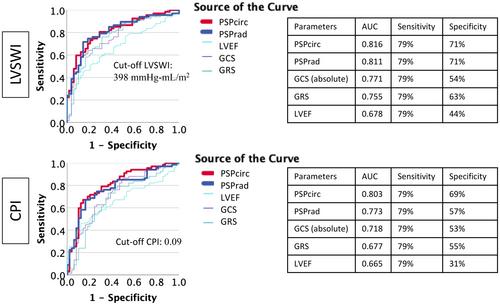A novel echocardiographic parameter considering left ventricular afterload during V-A ECMO support
Abstract
Background
Left ventricular stroke work index (LVSWI) and cardiac power index (CPI) account for the haemodynamic load of the left ventricle and are promising prognostic values in cardiogenic shock. However, accurately and non-invasively measuring these parameters during veno-arterial extracorporeal membrane oxygenation (V-A ECMO) is challenging and potentially biased by the extracorporeal circulation. This study aimed to investigate, in an ovine model of cardiogenic shock, whether Pressure-Strain Product (PSP), a novel speckle-tracking echocardiography parameter, (1) can correlate with pressure-volume catheter-based LVSWI and CPI, and (2) can be load-independent during the flow modification of V-A ECMO.
Methods
Nine Dorset-cross ewes (51 ± 4 kg) were included. After cardiogenic shock was induced, full support V-A ECMO (X L/min based on 60 mL/kg/min) commenced. At seven time points during 24-h observation, echocardiographic parameters as well as pressure-volume catheter-based LVSWI and CPI were simultaneously measured with X and following X-1 L/min of ECMO flow. PSP was calculated by multiplying global circumferential strain or global radial strain, and mean arterial pressure, for PSPcirc or PSPrad, respectively.
Results
PSPcirc showed a stronger correlation with LVSWI (correlation coefficient, CC = .360, p < .001) and CPI (CC = .283, p < .001) than other echocardiographic parameters. The predictability of PSPcirc for pressure-volume catheter-based LVSWI (AUC .82) and CPI (AUC .80) was also higher than other echocardiographic parameters. No statistically significant differences were identified between the two ECMO flow variations in PSPcirc (p = .558).
Conclusions
A novel echocardiographic parameter, PSP, may non-invasively predict pressure-volume catheter-based LVSWI and CPI in a load-independent manner in a cardiogenic shock supported by V-A ECMO.


 求助内容:
求助内容: 应助结果提醒方式:
应助结果提醒方式:


